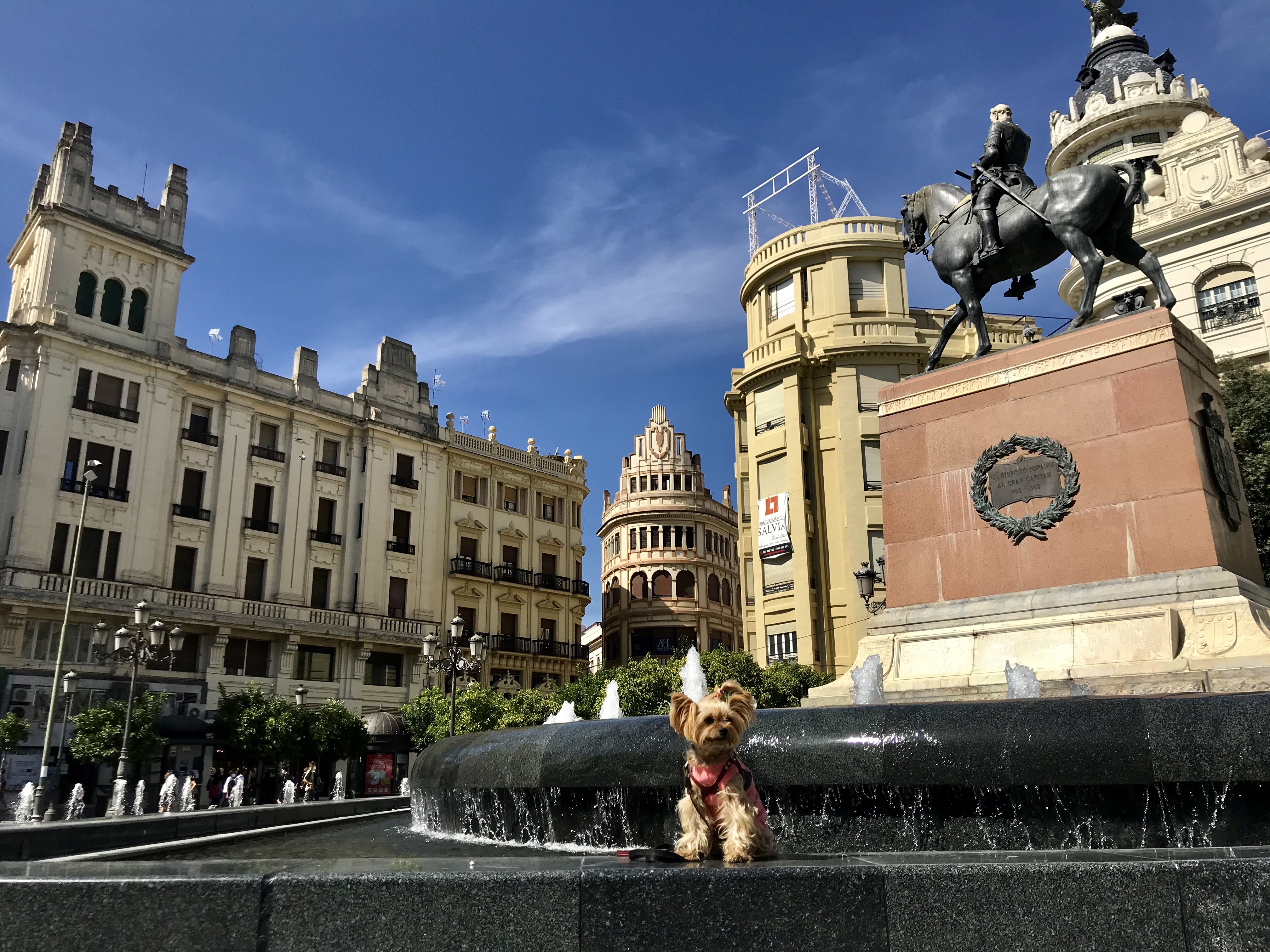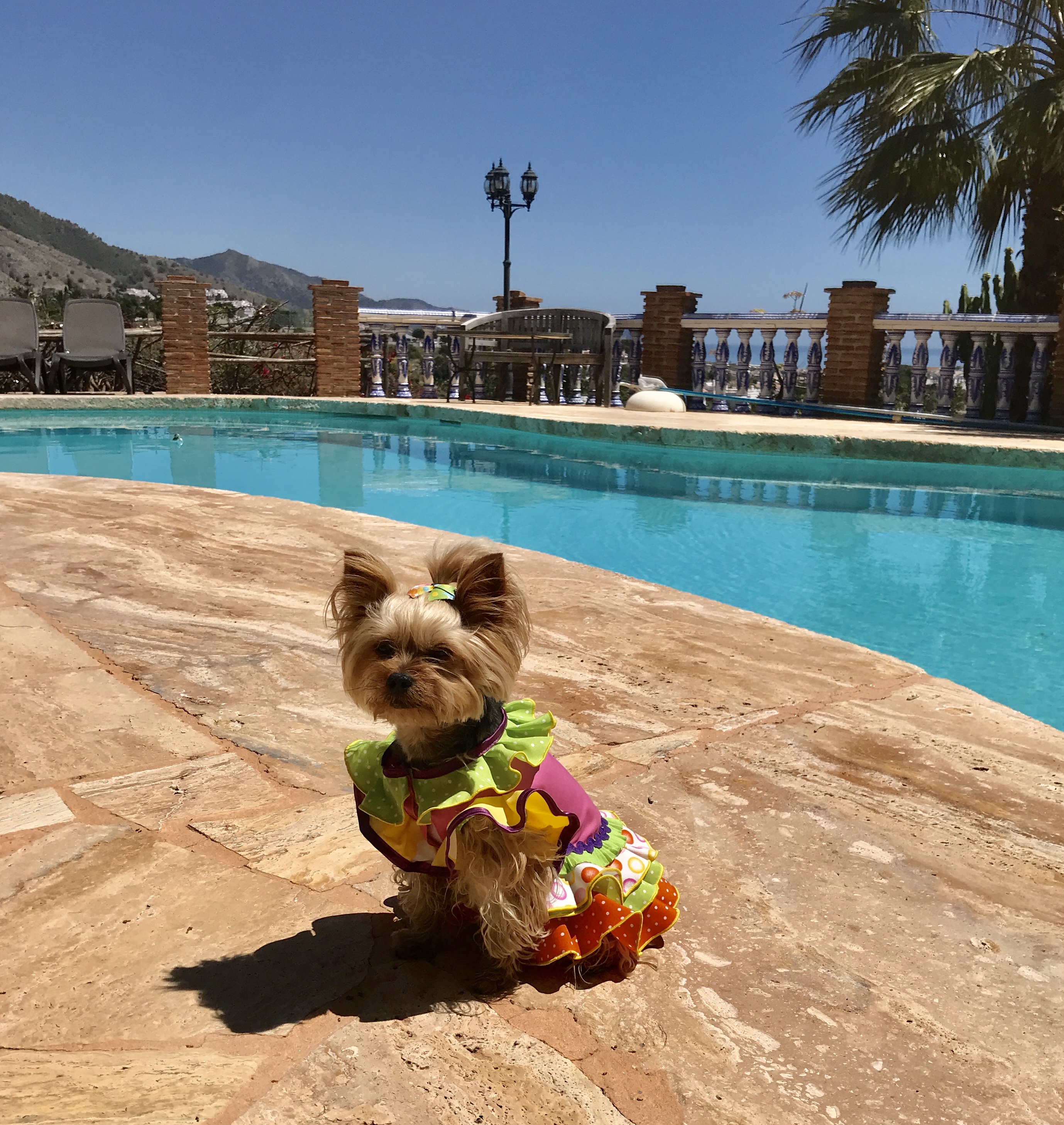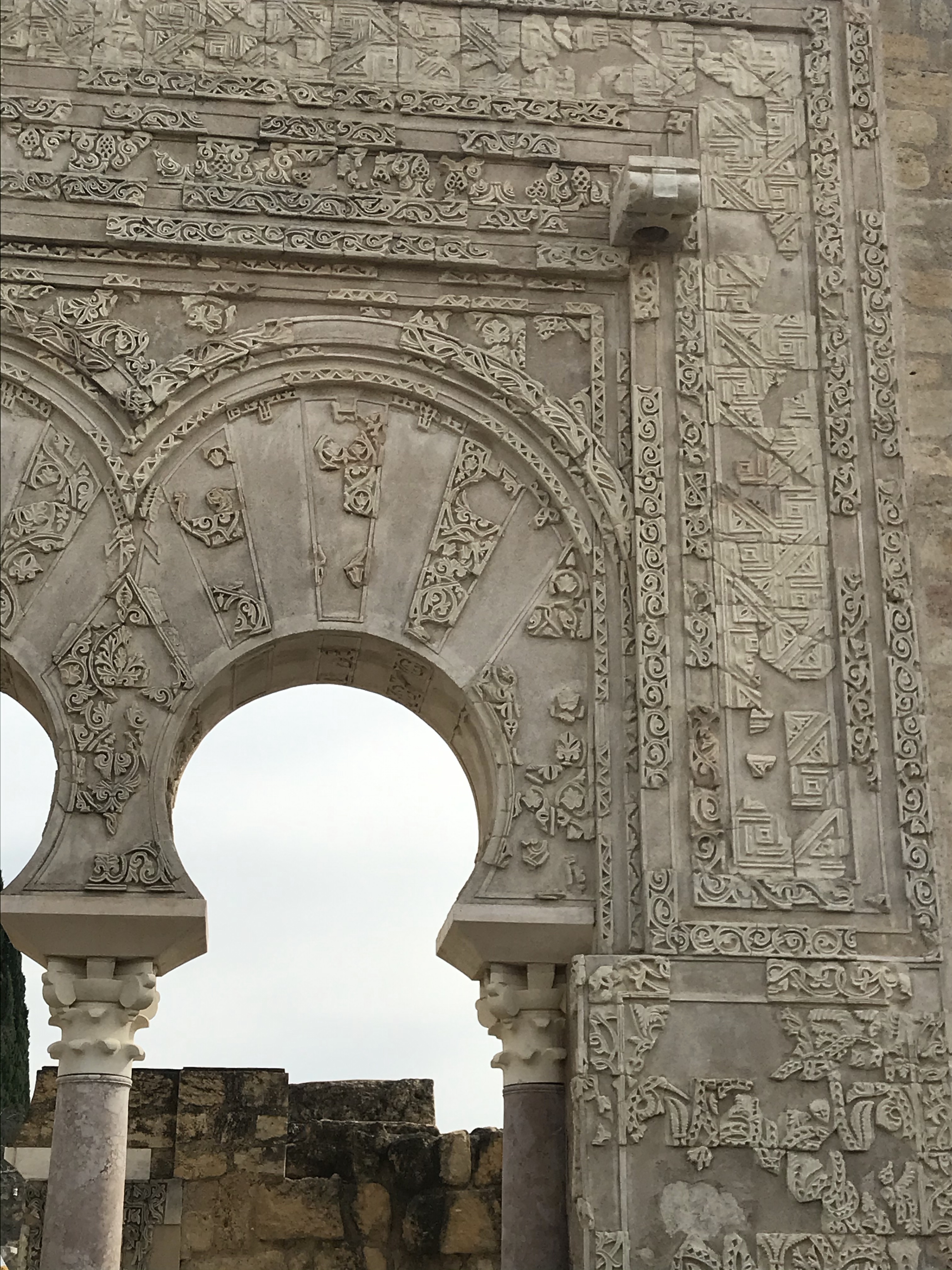
The city of Cordoba has a past with great significance. It was founded in 169 B.C. by the Romans. They chose this site for its strategic location with its highest navigable point of the Guadalquivir River. It became a port city of great importance, used for shipping Spanish olive oil, wine and wheat back to Ancient Rome.
Later in the 8th century, the Moors conquered Cordoba. The city served as the capital in exile of the Umayyad Caliphate and various other emirates. During that period, Córdoba was transformed into a world leading center of education and learning, and by the 10th century it had grown to be the largest city in Western Europe with up to 500,000 inhabitants, some say, possibly the largest in the world.
It was a very sophisticated culture and the city’s architecture attest to that fact. During dark ages when the rest of Europe was barbaric and illiterate, Cordoba was truly enlightened. Religion tolerant, Cordoba was also the site of free artistic expression and dedicated to science and philosophy.
Jewish, Romans and Muslim lived here in harmony until the Catholics took over in 1236 and began “La Reconquista”. Spain’s Reconquista or reconquest is a misnomer as there were no Spain at that time. The North had three main governing areas called Castille, Leon and Aragon. The Catholics took advantage of the weakening of the Moors’ hold to take over the south of the peninsula known as Al-Andaluz. In a very over-simplified way, this was the beginning of Spain as we know it today.
The Mezquita, built in 789 A.D. is a mosque turned cathedral in the 16th century. It is at the center of the town and a wonder of the medieval world, built at the time to rival Baghdad. The Catholics kept the mosque and built the cathedral on top of it. The result is stunning and highly atmospheric. The arches are built of granite, marble and alabaster.
La Mezquita outside

La Mezquita inside

The Bell tower or Minaret by the Moors is part of the Mezquita’s surrounding grounds. It was built over the remains of the original Muslim minaret. For four centuries, five times a day, a singing cleric would ride a donkey up the ramp to call all Muslims to tell them it is time to face Mecca and pray. The Patio de Naranjos is where they performed the ritual washing before prayer.

The Roman Bridge was built in the 1st century and rebuilt in the 10th by the Moorish occupation. Supported by 17 arches only two remain from the original.

Los Callejas de las Flores are the prettiest streets of Cordoba just north of the Mezquita. In May, the streets of Cordoba are flowing with flowers hanging from the wall pots.

Amy Lou is in the middle of la Plaza de la Tendillas, on Avenida del Gran Capitan, which is the center of modern Cordoba with its Art Deco buildings, countless cafés and numerous shops.

The Roman temple was discovered in the 50s. The elegant structure was built in the reign of Claudius in the middle of the 1st century

Córdoba’s main attraction is the Feria de los Patios every year in May. The city is one of the hottest in Europe during the summer months, when temperatures can exceed 40°C (104°F), so it is essential for its inhabitants to have a cool retreat in the middle of the day. Most houses here are built with an internal, open-aired terrace called patio, which is protected from the sun on all sides by thick stone walls. Over the centuries, these havens of cool shade were decorated with flowers, and fountains – a practice that was refined during the Moorish occupation. The Feria de los patios exists since 1918 and Córdoba’s town hall offers a prize for the prettiest patio annually.
You can see all of Cordoba’s main sites in a day but two nights are better to really enjoy the old and new part of the city. We stayed 3 nights to be able to also visit Medinat Al-Zahra, a must see archeological site 8 km from Cordoba.
It is a UNESCO heritage site also known as Medina Azahara which means The Shinning City. These ruins, once the palace of the caliph, were completely forgotten until the 20th century. It was built in year 929 A.D. as a power center to replace Córdoba. Only 75 years later, the city was looted and destroyed. It has a fascinating history.
Here is a list of the accommodations and restaurants to consider.
Accommodations
H10 Palacio Colomara on Plaza de las Tendillas in the very center of the big city where shops are. Very nice area. (go to the Grand Bar terrace restaurant next to this hotel)
Or the Air BnB apartment where we stayed, not so luxurious but decent and well located in the casco antiguo
This other Air BnB apartment seems like a good choice as well. We tried to book but it was already reserved. Literally next to the Mezquita.
Restaurants and cafés
Many cool tapas bars and restaurants are on La Ribera (river walk close to the Roman bridge). Here are a few we ate at or saw showing good food and vibes:
Regadera – fantastic modern tapas on the cool and hip Ribera.
Garum 2.1 – gastronomic tapas
La Furgo – delicious foodies tapas on the Ribera
Close to the H10 Hotel:
Gran Bar restaurant, classy with a really nice terrace on the square
Oba restaurant for modern tapas by the tourist office
La Chiquita de Quini (70meters from the apartment we rented)
La Boca inside the old town
La Trapperia Beer shop and Bar also serves food
Jugo vinos vivos (wine bar and restaurant)
For coffee, breakfast and afternoon sweet treat
Pastelería Roldan calle Dr Gregorio Marañon. They make amazing chocolates, pastries and ice cream.











Glad to see you are getting out and thanks for sharing
LikeLike